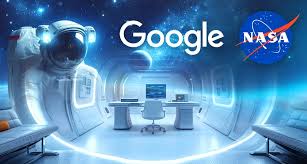
In a mind-blowing partnership, NASA and Google have revealed a revolutionary leap in space healthcare. On August 7, 2025, the two giants announced the Crew Medical Officer Digital Assistant (CMO-DA), an AI medical assistant designed to aid astronauts on deep space missions.
Let’s dive into what this Google-NASA collaboration means and the effect it’ll have on the future of space travel.
A New Frontier in Autonomous Space Medicine
A lot of preparations go into ensuring a successful space exploration. From training exercises to top-tier equipment to ensure the safety of the astronauts and success of the trip. However, the most critical part of any space exploration mission is keeping the astronauts alive and healthy.
Sometimes space missions can take from six months to over a year, and this often spells risks for the astronauts in isolated microgravity environments. Astronauts are often at risk of bone density loss, muscle atrophy, radiation exposure, weakened immune systems, and mental health challenges from isolation.
How Does CMO-DA Factor In?
In preparation for medical emergencies, all astronauts undergo mandatory training and have regular contact with a team of doctors who closely monitor their health on the ground. However, there are limitations to this; especially when the exploration is done outside Earth’s orbit, communications delays can span up to 20 minutes.
The further the distance from Earth, the longer it takes for messages to be delivered or sent. In situations of emergencies where a doctor needs to be contacted on the ground, this can be a huge barrier. This is where CMO-DA steps in.
The CMO-DA (Crew Medical Officer Digital Assistant) is an innovative clinical decision support system designed to assist astronauts during extended space missions. It is designed to autonomously diagnose and treat symptoms when crews are unable to reach doctors on the ground.
The CMO-DA AI system makes use of cutting-edge natural language processing and machine learning techniques to provide and track real-time analysis of crew health and performance. The natural language function allows the astronauts to communicate with the system as they would with a human doctor.
With functions like AI diagnostics and continuous monitoring, conditions like radiation exposure, low oxygen levels, and the presence of infections can be spotted before they become life-threatening. The system can also provide each astronaut with personalized treatment plans to reduce/prevent decrease in bone density and muscle atrophy.
Is the CMO-DA ready yet?
No, currently it’s still in the trial and review stages, although there are reports of reliable diagnoses based on reported symptoms used for the tests. Hopefully the full potential of the CMO-DA will be unlocked, and it will be available on or before 2027 (Artemis Lunar Landing Mission).
Beyond Space: How This Will Help Us All
The benefits associated with the CMO-DA are ones that aren’t limited to deep space missions alone. It can especially come in handy in remote communities, military operations, rural hospitals, or other isolated environments to provide life-saving diagnostics without a specialist being on site.
CMO-DA could give rise to a new era of telemedicine, one boosted by an AI system that grows, learns, and adapts to each patient. This isn’t just a tool; it’s a lifeline in the making, one with so much potential to change how we view medicine.

